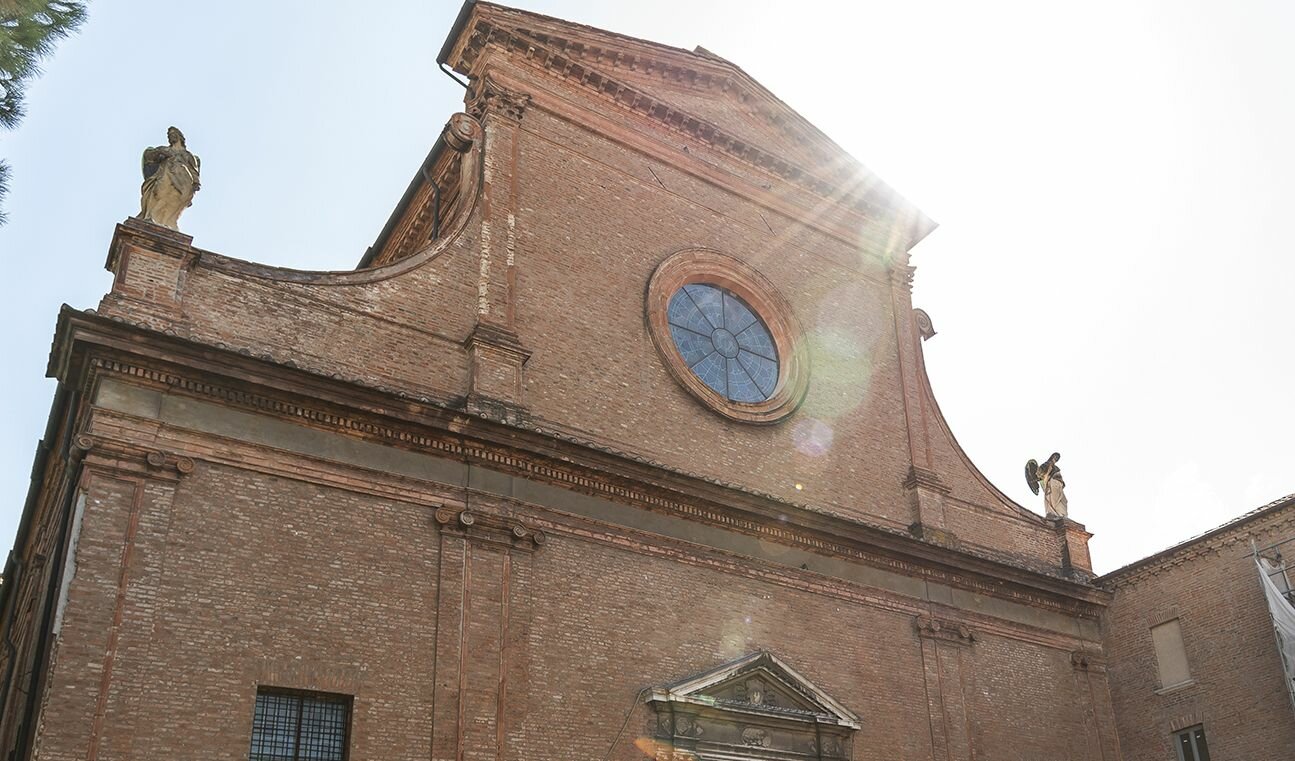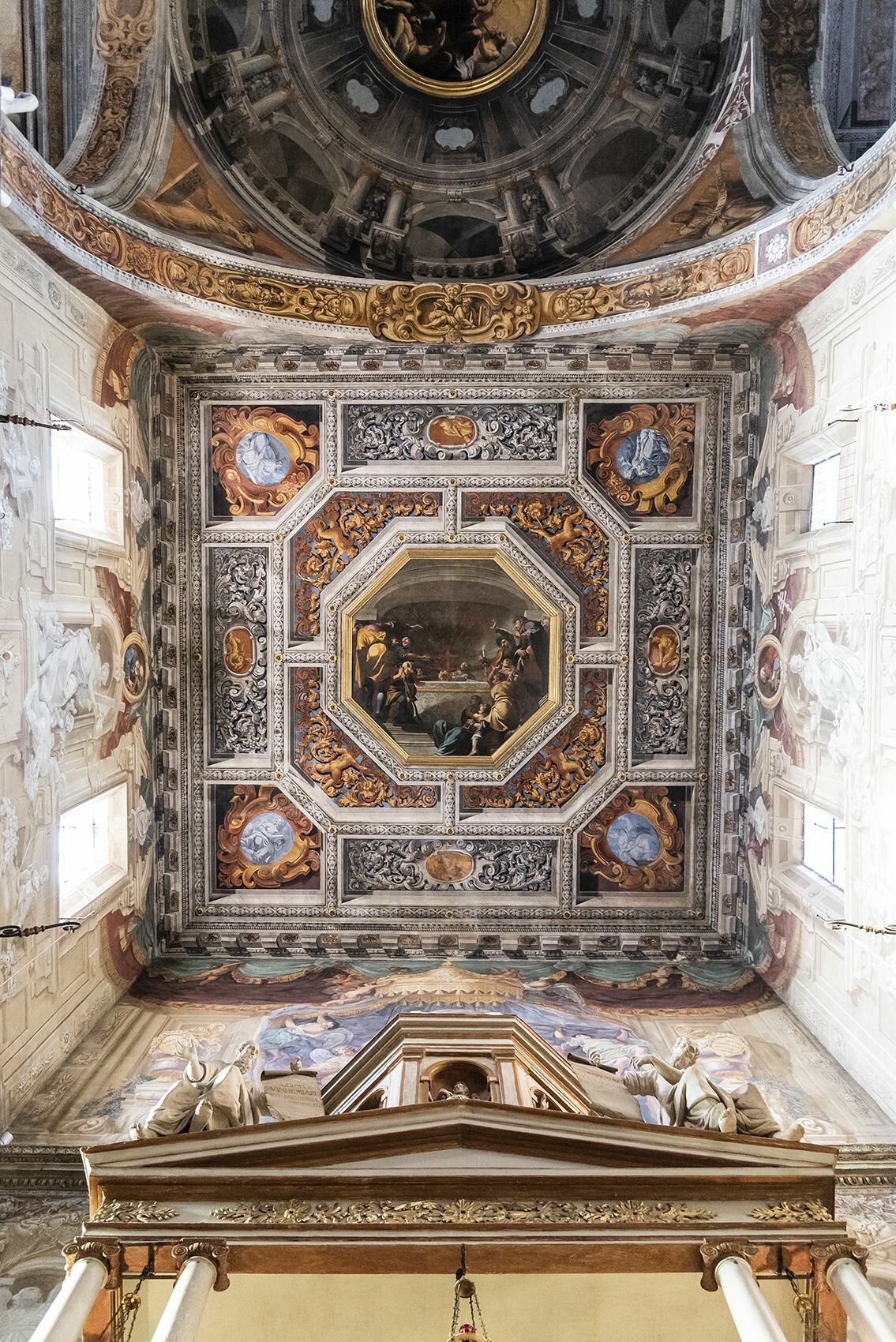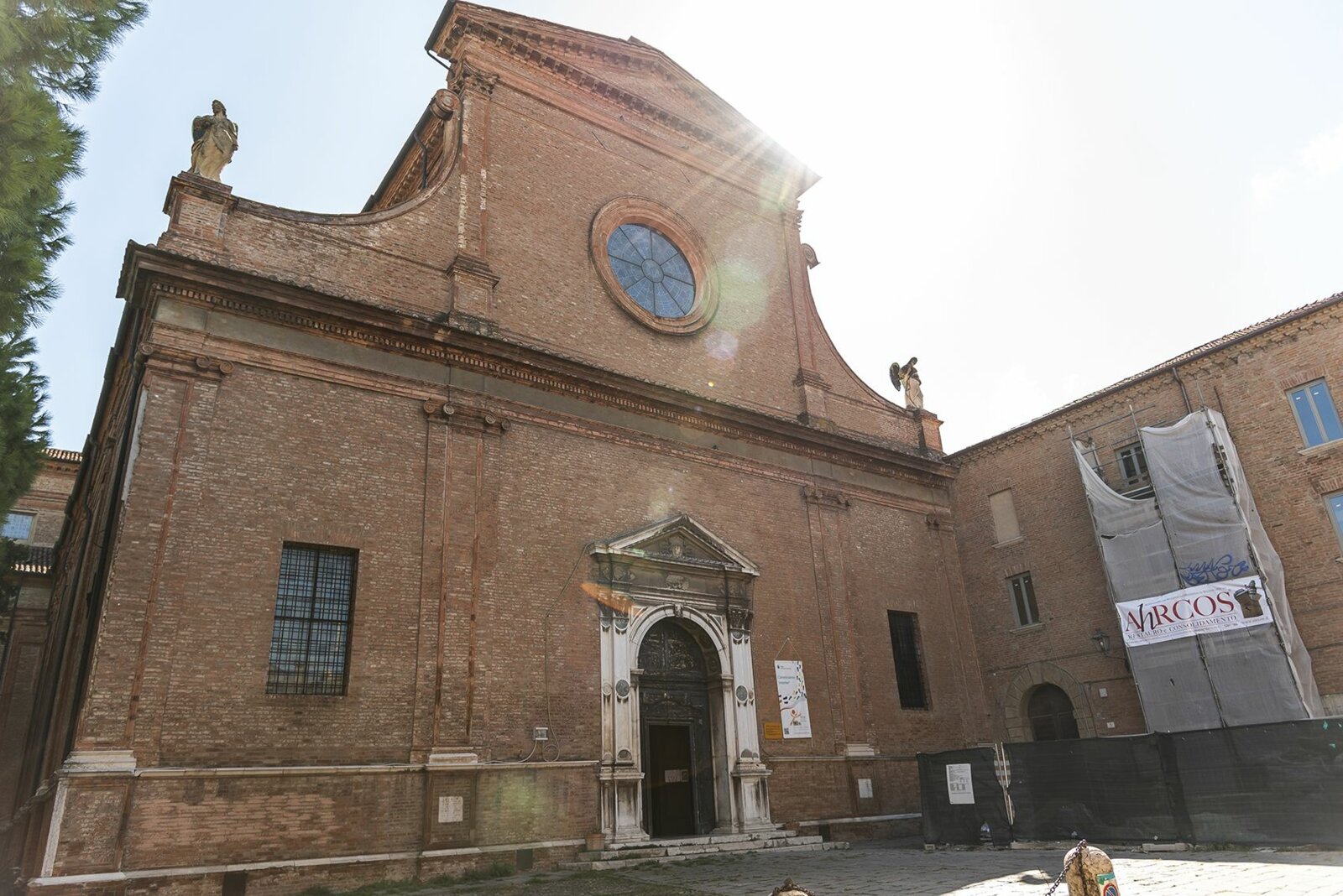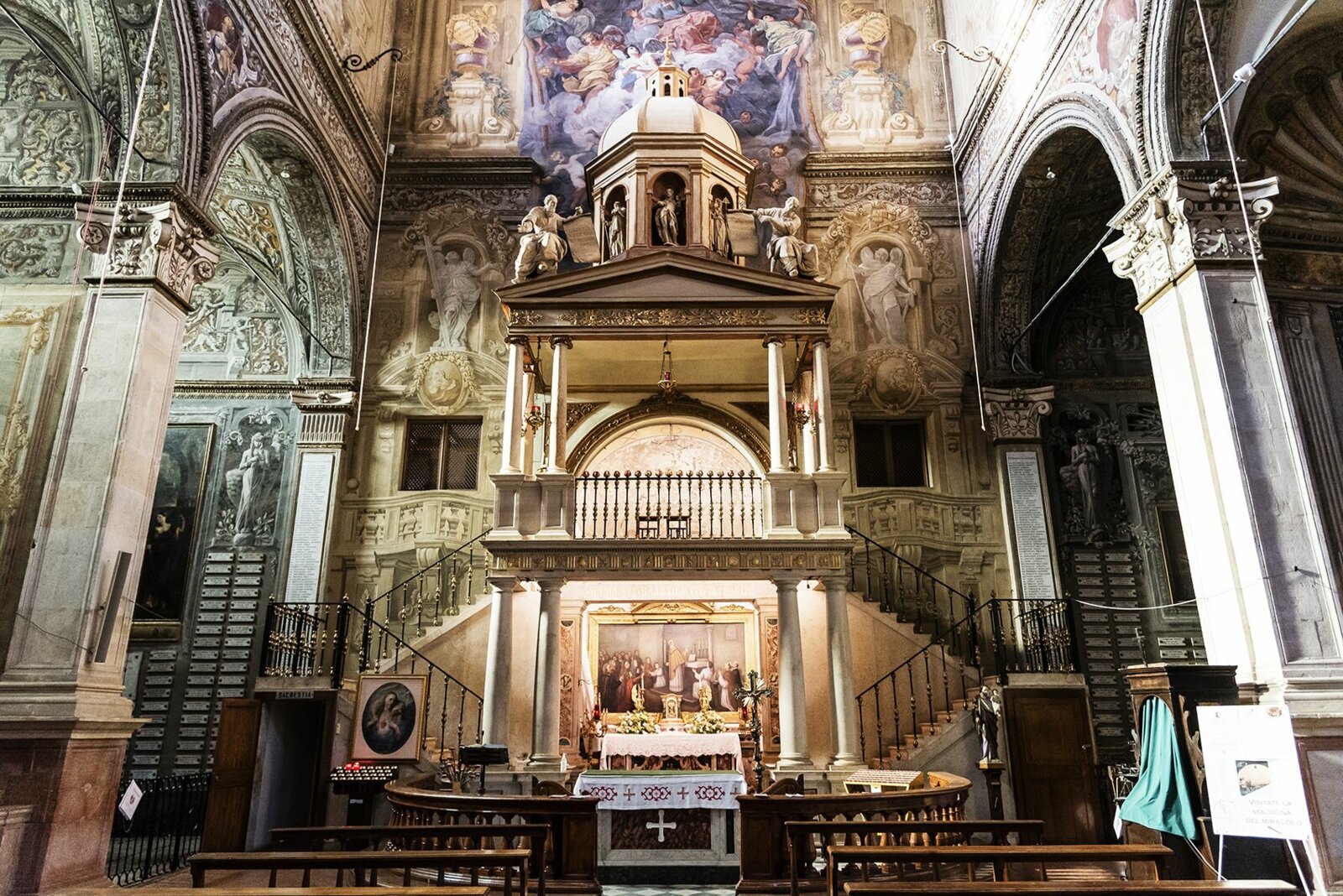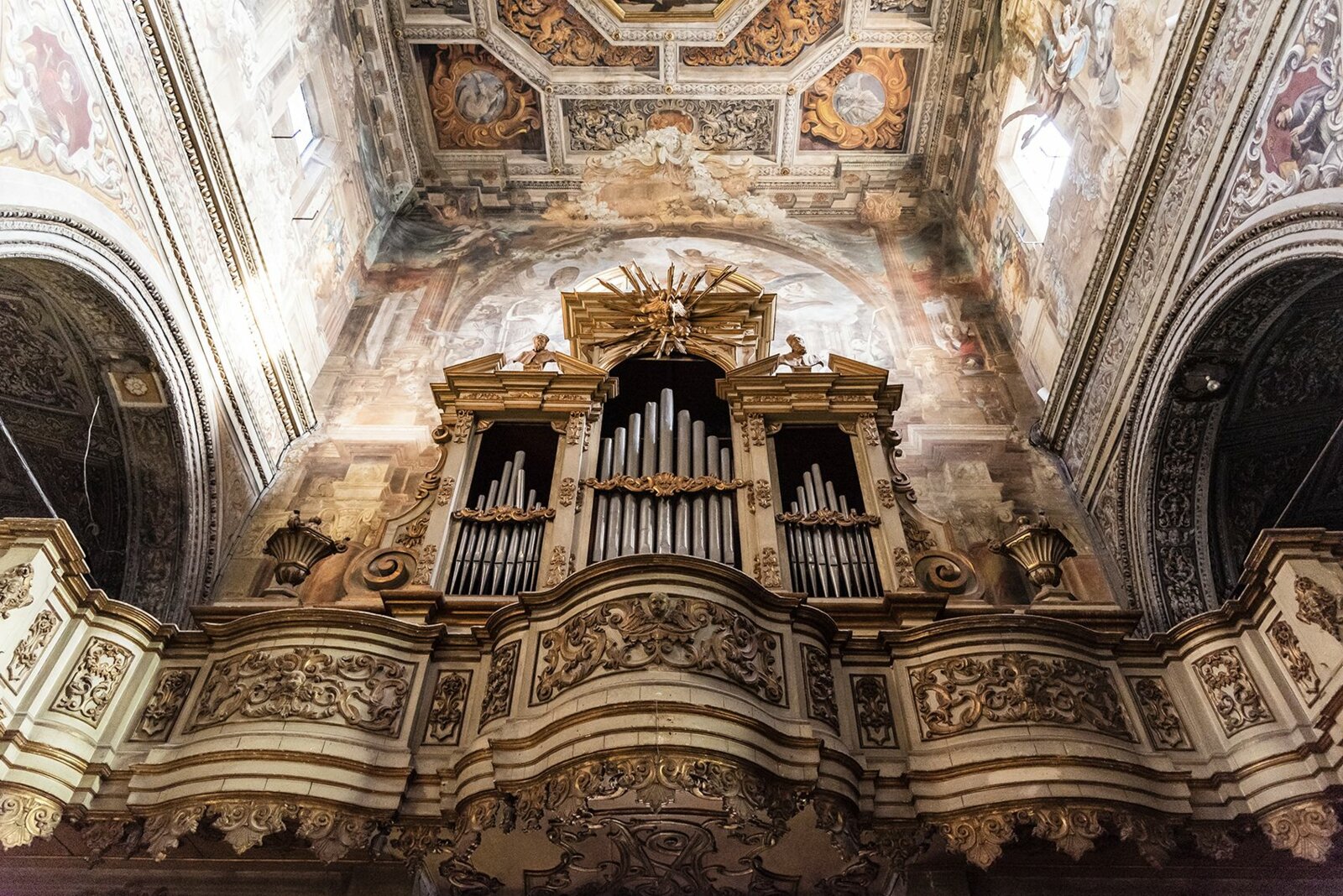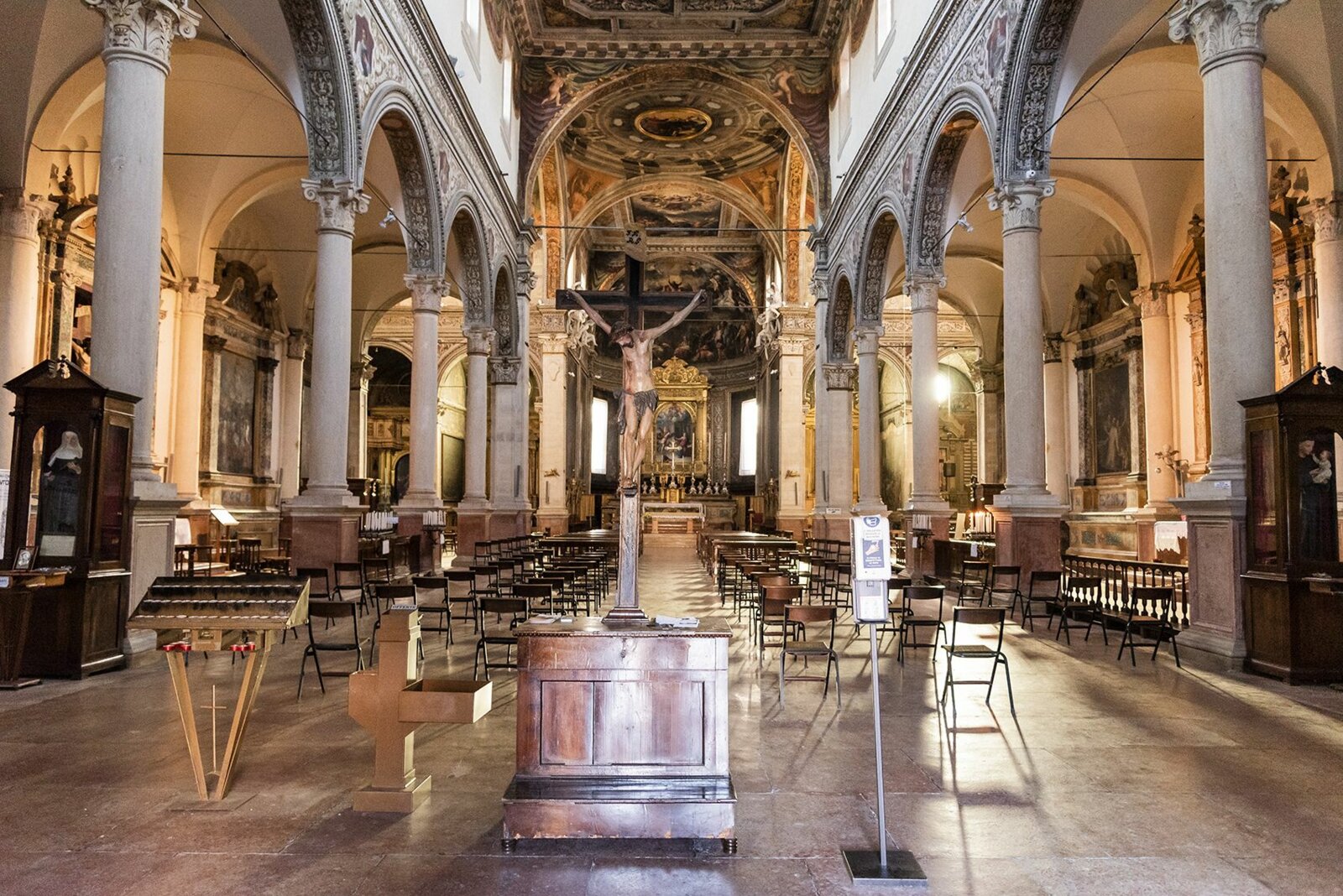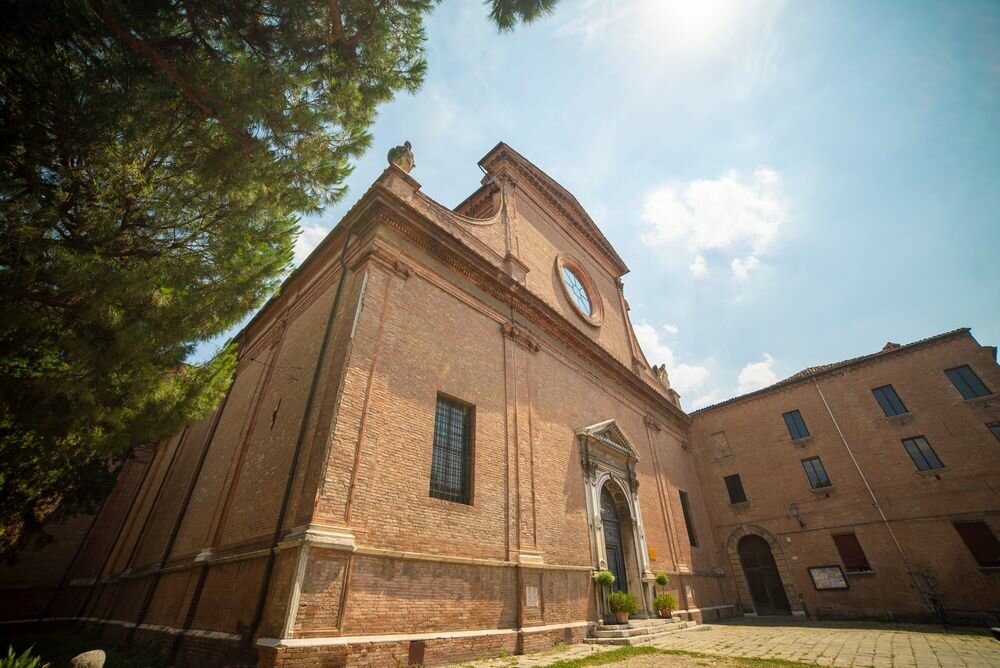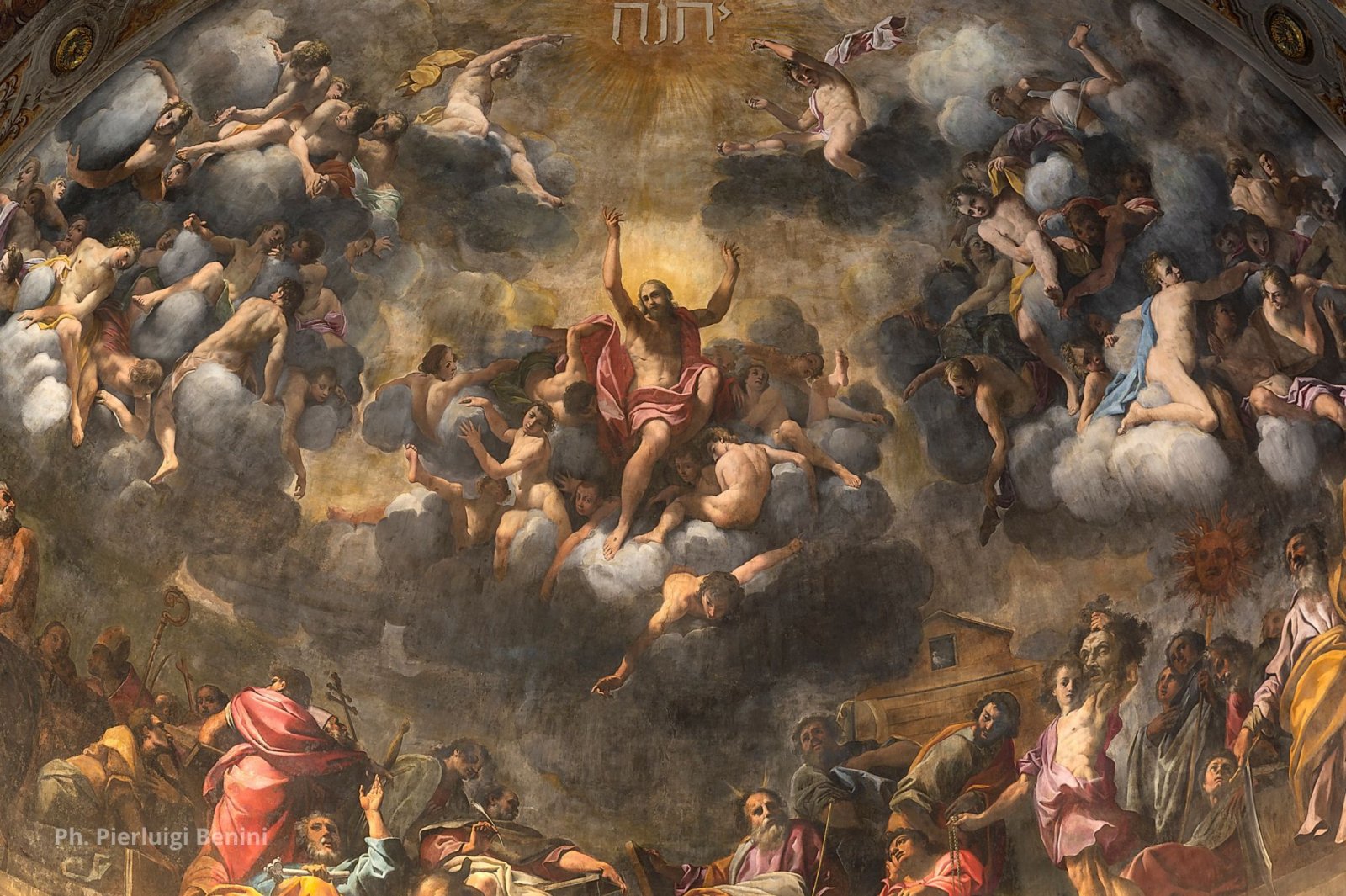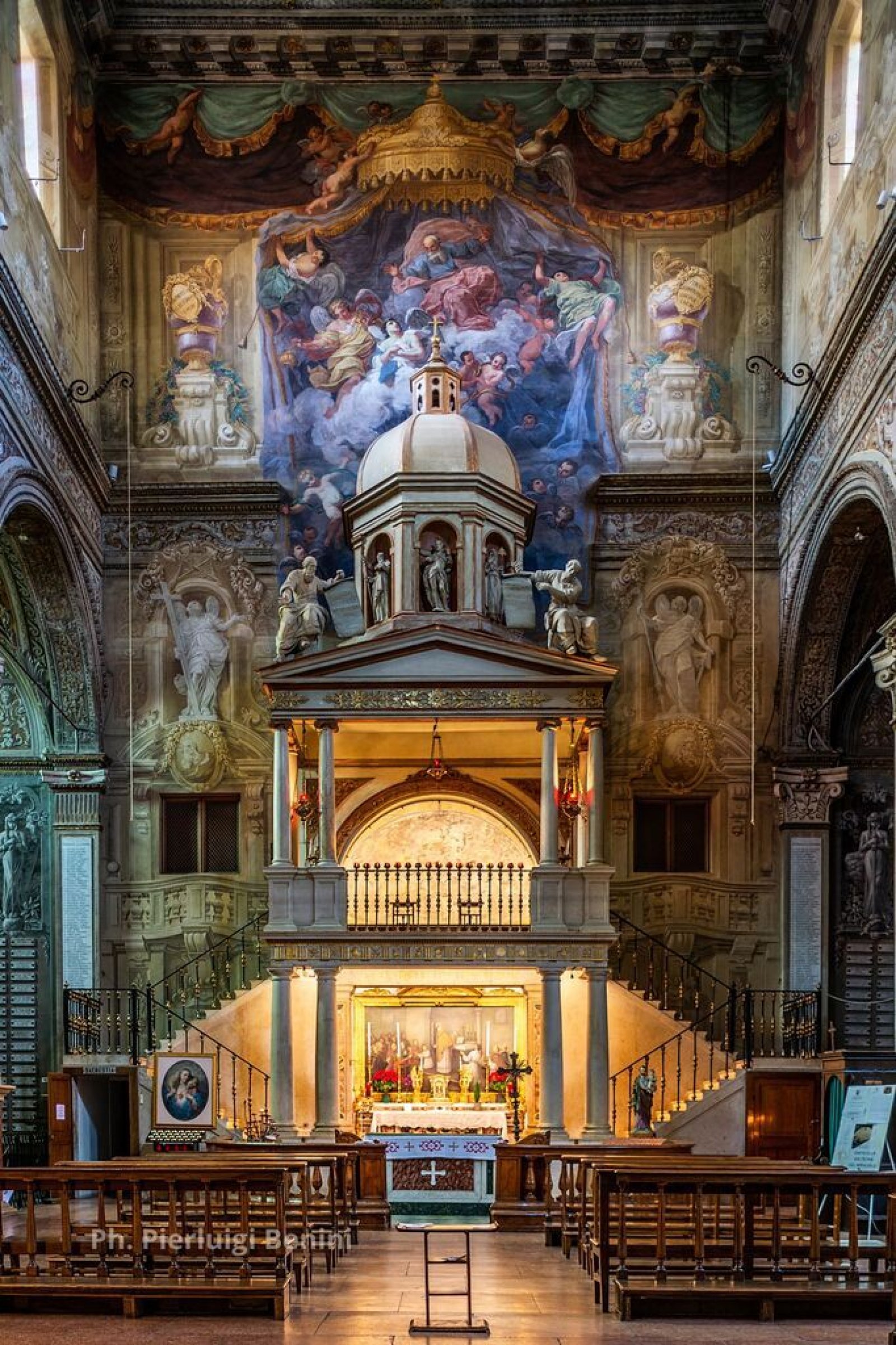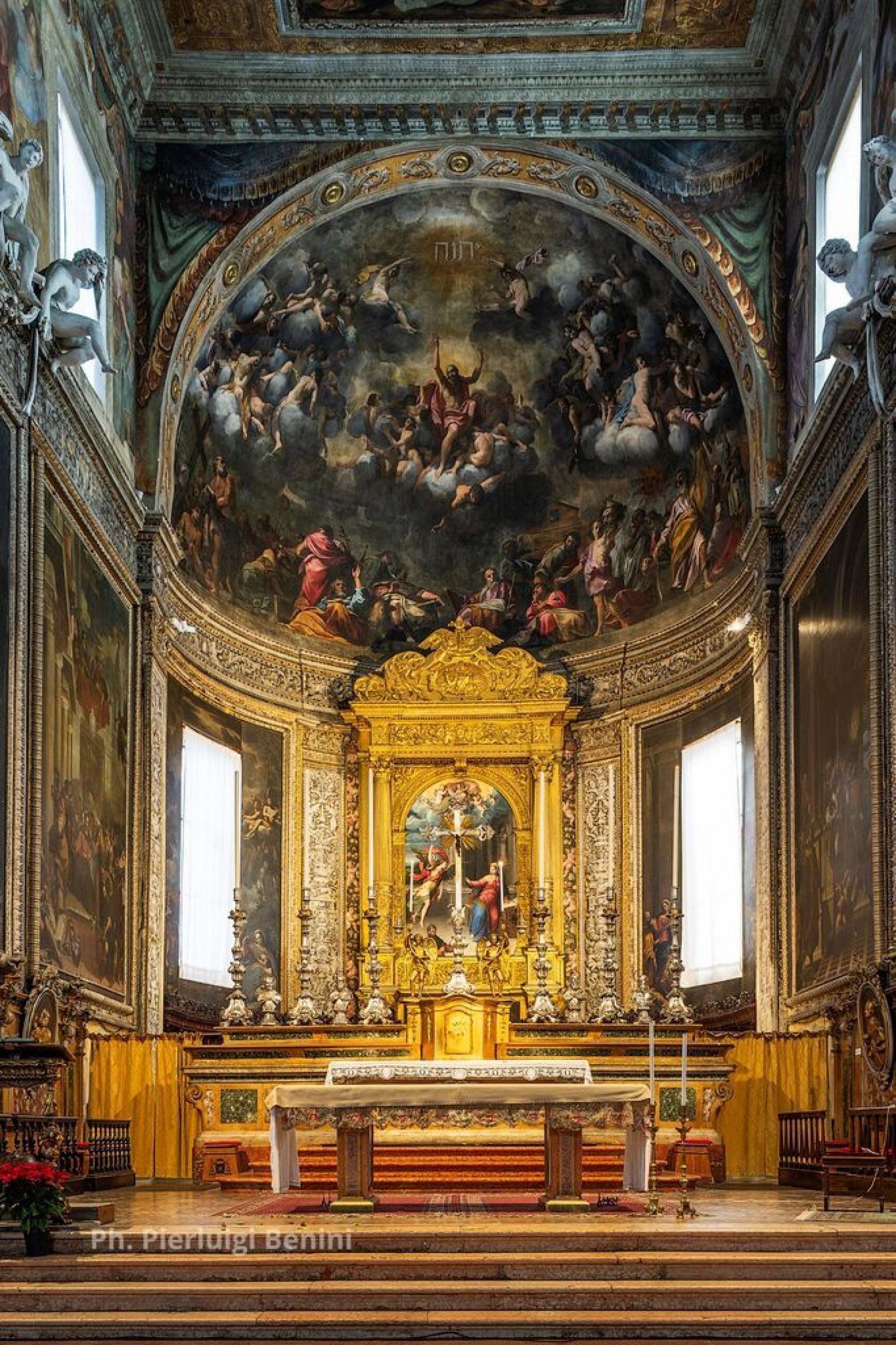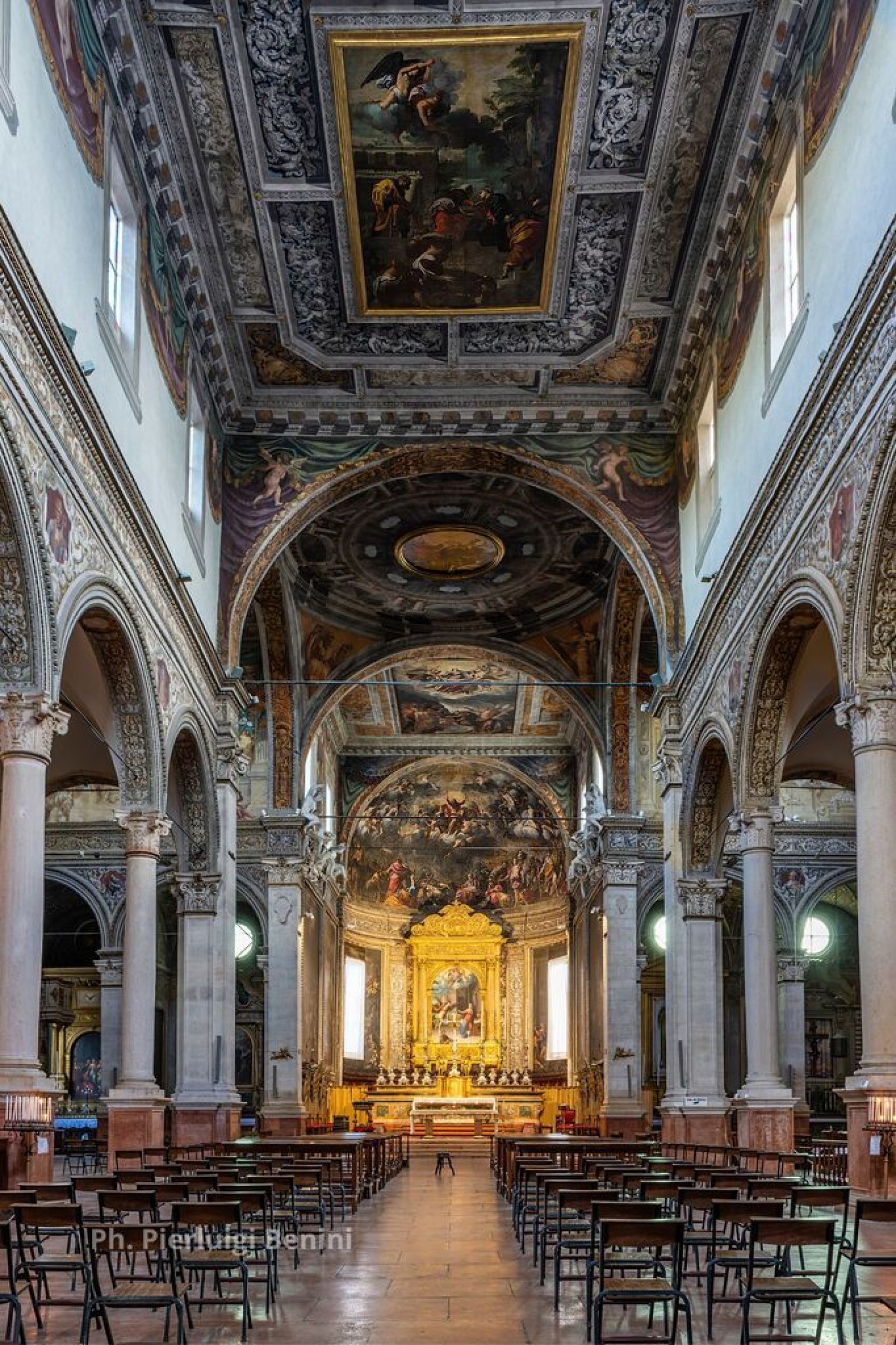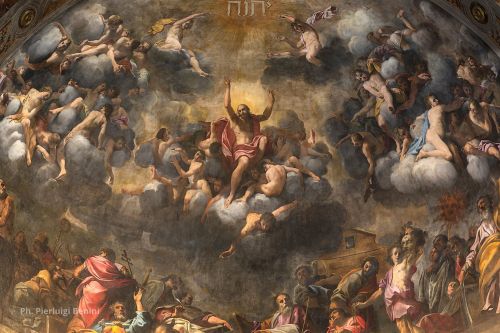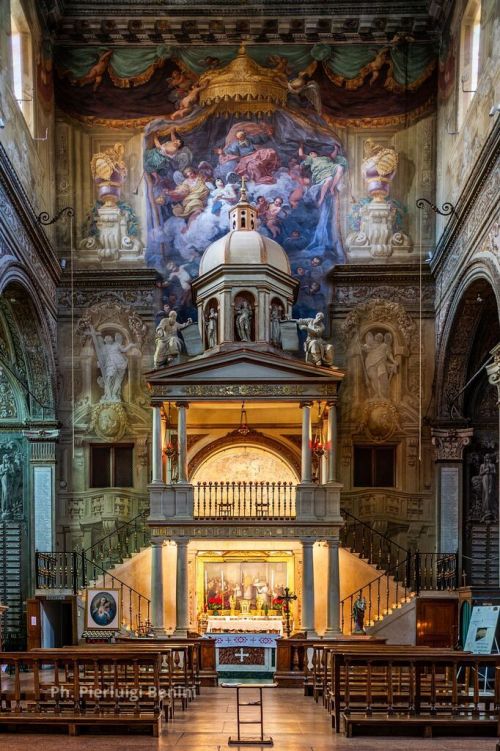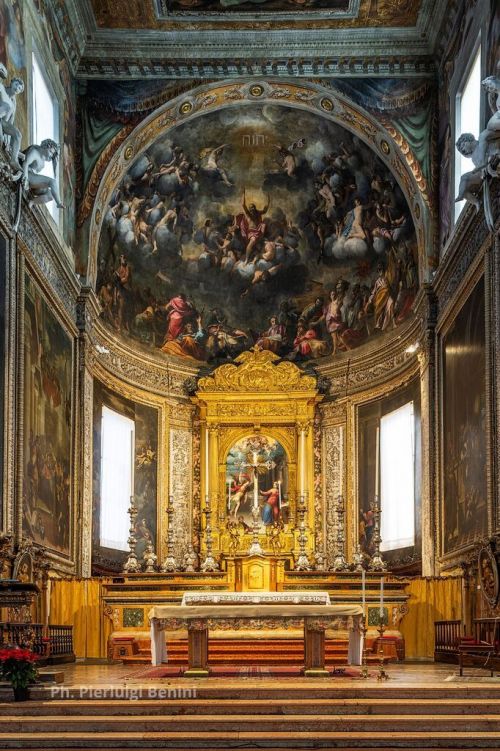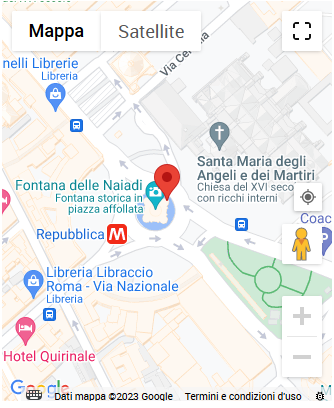Potrebbe interessarti anche

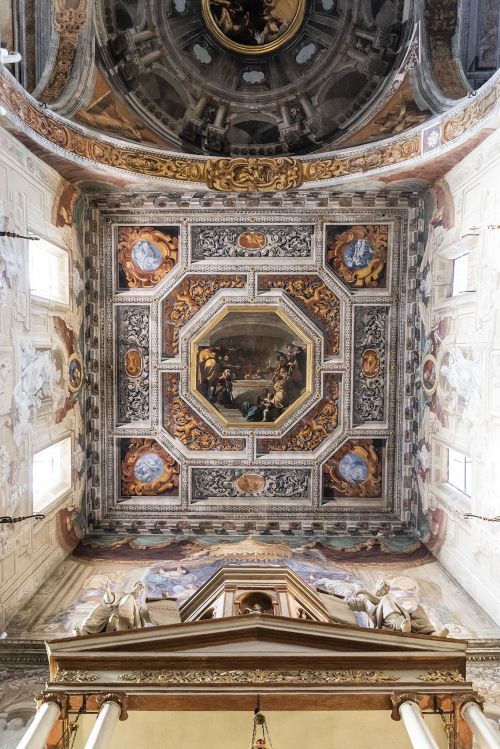
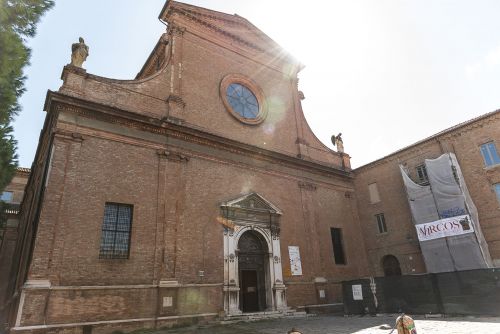
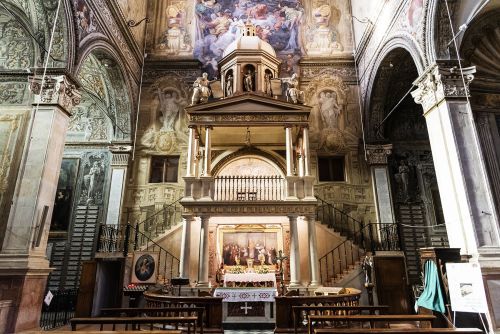
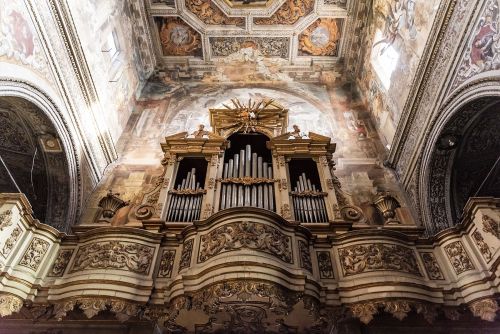
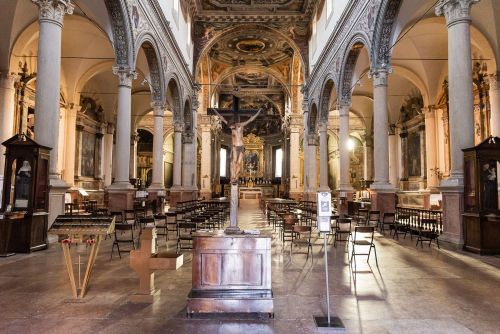
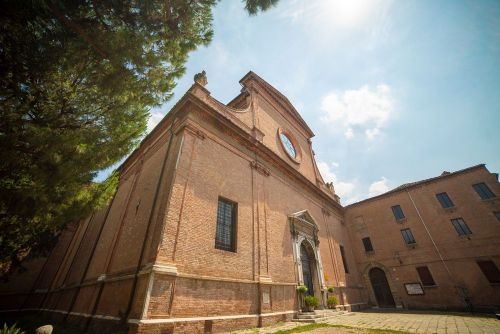
Santa Maria in Vado
If you are looking for a place that will make you dream as soon as you cross its threshold, you must visit the Church of Santa Maria in Vado.
This church is one of the focal points of Ferrara’s art, in which you will find elements of the fundamental representatives of 17th-century painting in Emilia. A church full of splendid details, set in the city's ancient medieval streets, a stone's throw from the Schifanoia Museum. Inside you will find magnificent works by Carlo Bononi, Ercole de' Roberti, Camillo Filippi and Domenico Mona.
Historical Notes
This spot of the city has been connected with Marian cults since ancient times: as early as the 5th century, there was a capitol with an image of the Virgin for votive purposes where the Church of Santa Maria in Vado now stands. The first evidence of a small church, however, dates back to the 10th century.
The name Santa Maria in Vado derives from its location on the ancient northern bank of the Po, near a ford (called vado).
The church was rebuilt in 1495 by the famous architect Biagio Rossetti in collaboration with the painter Ercole de' Roberti and the master builder Bartolomeo Tristano. The shrine that still houses the vault where signs of the miracle are visible, on the other hand, dates back to 1594.
Several distinguished artists of the Ferrara Renaissance worked on the decorative representations of the church. On either side of the altar, two gigantic canvases by Domenico Mona, The Nativity of Mary and The Nativity of Jesus, will catch your eye. Next to these are The Marriage at Canaan and The Marriage of the Virgin by Carlo Bononi, an artist who also created the fresco you can admire in the basin, dedicated to the Exaltation of the Name of God. Immediately below the basin, in the large gilded altarpiece, is Camillo Filippi's The Annunciation.
The history of this quiet church suddenly took an unexpected turn in 1171, when a Eucharistic miracle occurred during Easter Mass, making it a pilgrimage destination from all over Italy.
In addition to the magnificent 17th-century artworks and decorations here, you will find an atmosphere charged with spirituality. We're telling you: stretch your jaws well before entering because once you're inside you'll be left open-mouthed for a long time!
Trust us, do not miss the chance to visit this wonderful church.
You may not know about...
THE EUCHARISTIC MIRACLE. On March 28, 1171, a real miracle took place in Santa Maria in Vado. From the holy bread, broken during the liturgical service, blood started gushing out, bathing the arch over the altar. The fame of the church, which did not originally have the lavish features you can see today and was located on the edge of the urban area, dates back to this episode.
THE WORSHIP OF THE FALLEN IN WAR. Within the church, the Eucharistic miracle has a chapel dedicated to it. To the right and left of this chapel, however, you can visit two others that may be called unusual. Initially named after the Calcagnini and Varani families, in 1925, after the Great War, these chapels were converted to the worship of the fallen in war, with plaques ensuring their eternal memory.

